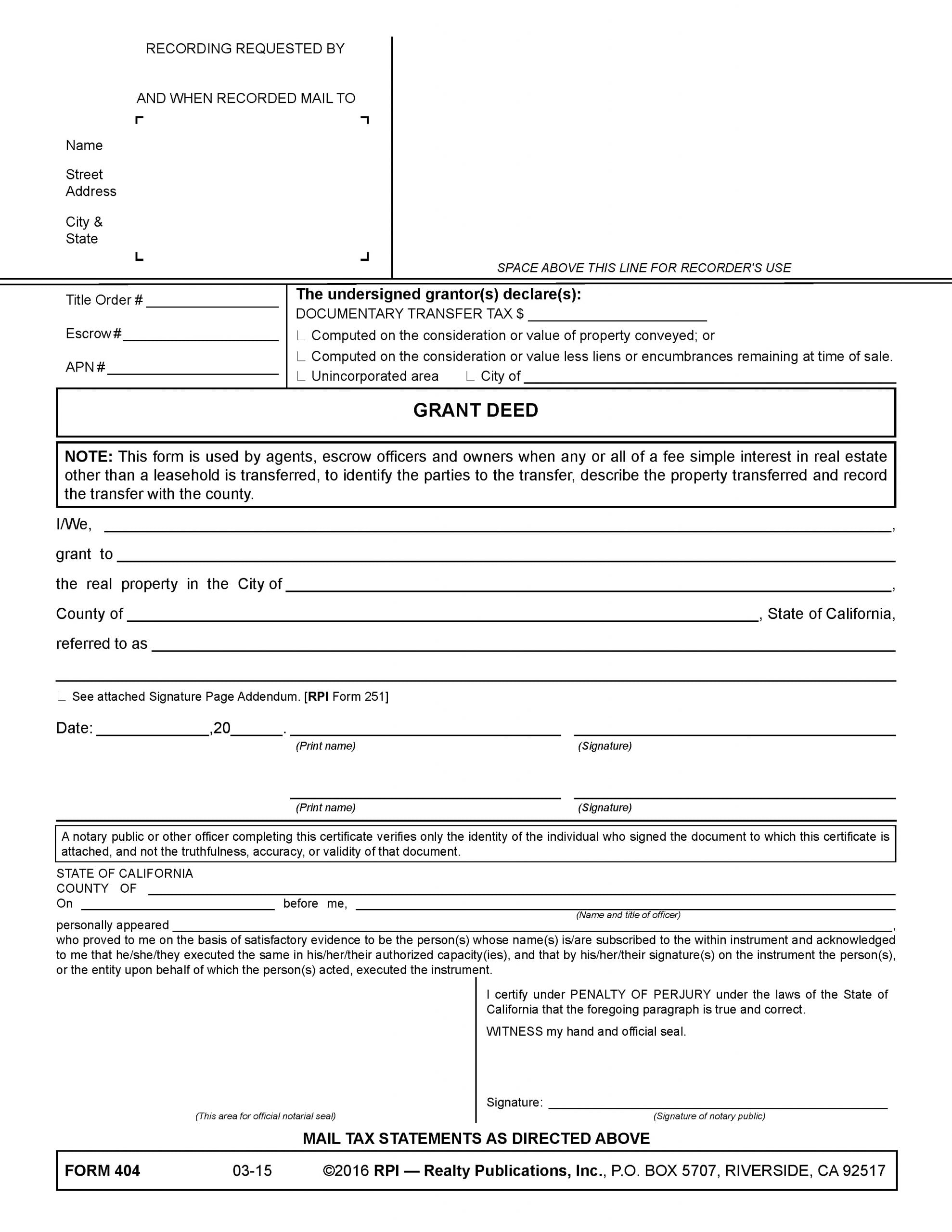A deed as a transfer
Real estate is conveyed when title is transferred from one individual to another. [Calif. Civil Code §1053]
The transfer of an interest in title to real estate contained in writing is called a grant or conveyance, no matter the form of writing. [CC §1053]
A deed is itself the grant which transfers title to property. [Hamilton v. Hubbard (1901) 134 C 603]
Title by deed passes either:
- voluntarily by agreement with the owner, such as in a sale in the open market or foreclosure on a trust deed; or
- involuntarily, such as the enforcement of a creditor’s judgment or tax lien.
No matter the form of writing, the individual conveying real estate is called the grantor. The individual acquiring title is called the grantee.
To be valid, a deed needs to:
- be in writing;
- identify the grantor and the grantee;
- contain a granting clause stating the grantor’s intention to convey;
- adequately describe the real estate involved;
- be signed by the grantor; and
- be handed to and accepted by the grantee.
Form deeds used in real estate transactions fulfill these requirements by containing words of conveyance and identifying the parties and a description of the real estate. Their size and format permit the document to be notarized and recorded. [See RPI Form 404 and 405]
Related Video: A Deed by Any Name is a Grant
Click here for more information on this topic.
Grant deeds vs. quitclaim deeds
The words of conveyance in a deed depend on whether the deed used is a grant deed or a quitclaim deed.
A grant deed is used to pass a fee estate from the grantor to a grantee unless a lesser interest is stated in the deed. Use of the word “grant” in the granting clause, without noting a lesser interest in the description of the property, indicates the conveyance of a fee simple interest in the described property. [See RPI Form 404]
Related Video: Word-of-the-Week: Grant deed
Click here for more information on this topic.
Alternatively, a quitclaim deed conveys whatever interest the grantor may hold in the real estate. The words of conveyance historically used in a quitclaim deed are “remise, release and otherwise quitclaim.”
However, only the word “quitclaim” is required as the word of conveyance. A quitclaim deed does not contain the word “grant” since the conveyance includes no implied warranties under a quitclaim deed. Yet, the parties to a quitclaim deed are still the “grantor” and the “grantee.” [See RPI Form 405]
The type of deed used to convey property is evidence of the future role the individual conveying title undertakes. Thus, a grant deed conveys real estate with covenants relating to the interest conveyed.
A quitclaim deed, however, simply conveys any interest in real estate without any assurance the individual named as grantor holds an interest to convey.
Ultimately, a quitclaim deed terminates any interest in the real estate described in the deed which may be held by the grantor signing and delivering the quitclaim deed. Unlike a grant deed, a quitclaim deed operates to release to the grantee all interest the grantor may hold in the property. [Platner v. Vincent (1924) 194 C 436]
A quitclaim deed passes whatever title, legal or equitable, the grantor possessed on execution (signing and delivering) of the quitclaim deed.
Use of a grant deed and quitclaim deed
Agents, escrow officers and owners use the Grant Deed form published by Realty Publications, Inc. (RPI) when any or all of a fee simple interest in real estate other than a leasehold is to be transferred. [See RPI Form 404]
The form identifies the parties to the transfer, describes the property transferred and allows the individuals to record the transfer with the county. [See RPI Form 404]
Agents, escrow officers, owners or title companies use the Quitclaim Deed form published by RPI when a person relinquishes whatever interest, if any, they may hold in title to real estate. [See RPI Form 405]
The form identifies the parties to the transfer, describes the property involved and allows the individuals to record the transfer with the county. [See RPI Form 405]















